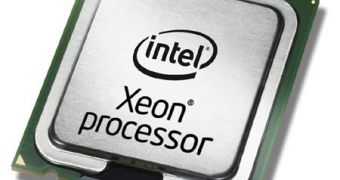Intel has been relying on the tick-tock strategy for developing microprocessors ever since 2007 and in the future the company will still use this model for Ivy Bridge's successors, Haswell, Rockwell, Skylake, and Skywell.
Revealed by a leaked roadmap which shows Intel's upcoming server microarchitectures and the schedule for their release, the company's plans start with the introduction of the first Xeon Sandy Bridge-E processors in Q4 2011.
As many of you know, these are based on the 32nm fabrication process and will be replaced by a special series of Ivy Bridge CPUs (probably Ivy Bridge-E) that will move the architecture into the 22nm territory at the beginning of 2013.
Presumably, these will be nothing more than a 22nm die shrink of the upcoming Sandy Bridge-E, but they should enable Intel to mature its new fabrication node to the point that it will be ready to release Haswell in Q1 of 2014.
Since Haswell is based on a newly developed architecture, these processors are expected to bring a series of new features to the server space, including support for the AVX2 instruction set.
Furthermore, Haswell could also get a configurable TDP, similar to the one that Intel plans to introduce in the mobile version of this CPU.
Almost a year and a half after Haswell's introduction, this architecture will be used for developing a 14nm die shrink of the processor, that is known by the code name of Rockwell.
From this point on, things are rather sketchy, as there are about five years to go until Skylake is released, so the chip is still under heavy development and Intel is just working on the first silicon simulations right now.
However, it would be quite safe to say that, at this point in time, Intel will be seriously thinking about adding PCI Express 4.0 support to its CPUs in order to keep up with the even faster 100Gbit/s network speeds that will be usual by then.
Finally, all the new features that will see the light of day in Skylake will also be transitioned to Skymont, Intel's 2017 die shrink that will most probably be the world's first processor manufactured using the 10nm fabrication node. (via ComputerBase)

 14 DAY TRIAL //
14 DAY TRIAL // 
